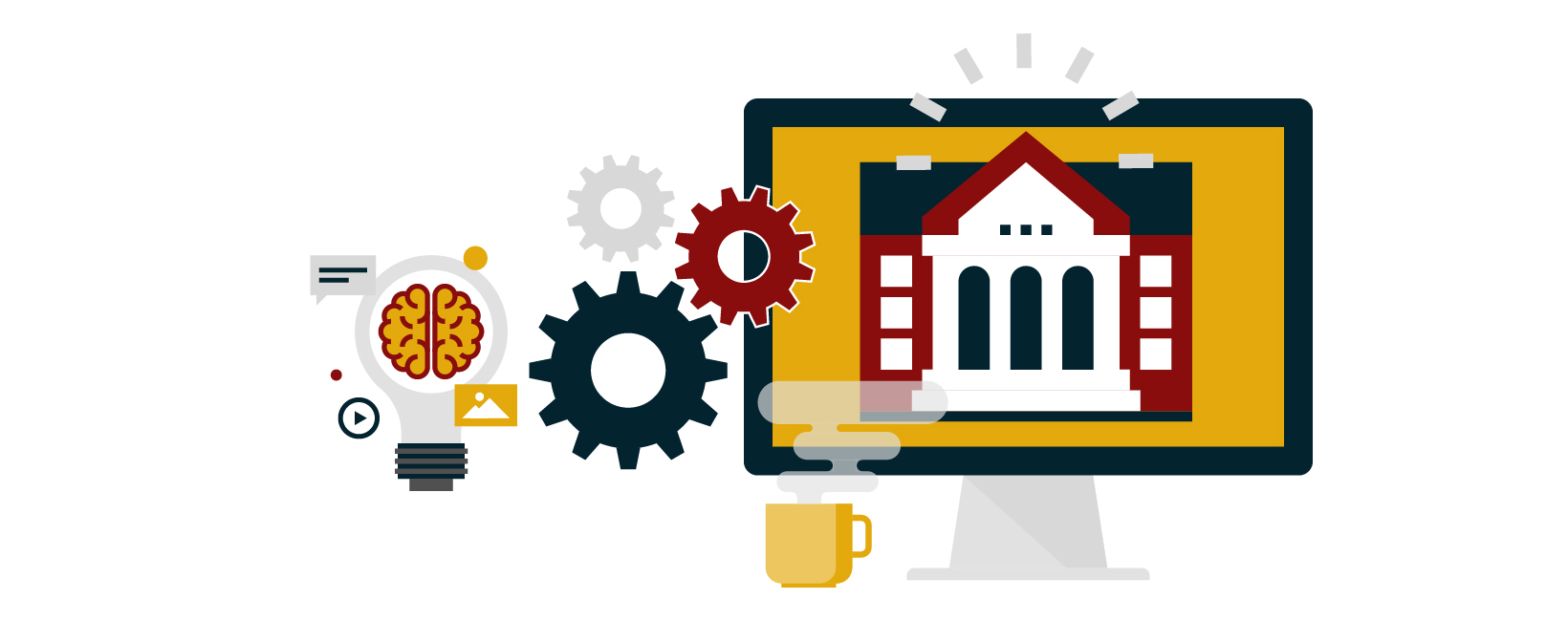 Apr 07, 2021
Persona
Apr 07, 2021
Persona
Nine crucial steps to take before issuing your website development RFP
Taking on a website redesign in any industry is often a monumental project, but within a higher education context, the decentralized nature of colleges and universities often results in competing priorities, decision-making by committee, and a longer-than-estimated timeline. Selecting an agency partner with higher education expertise to guide your work can certainly alleviate some of these challenges (a realistic project plan that takes consensus building into consideration is a great start!), but there are a number of steps you can take to best position yourself for success… before you even issue an RFP.
1. Create alignment on goals and target audiences
If there’s one thing you can do for yourself before beginning a website redesign project, this is it. Get these two symbiotic strategic decisions in order at the outset and your communications, your feedback loops, your decision-making, your life, will be made infinitely easier. Alternatively, confusion over what the site needs to accomplish and which users are priority users will create delays and leave stakeholders feeling unheard.
- Cultivate a rank order of target audiences—and by “rank order,” I mean you need to choose who your primary audience is and which are considered secondary or tertiary audiences. (Note: there can only be one primary audience, and it’s your prospective students.) With that out of the way, your job now is to gain buy-in on that point and put the other key audiences in priority order: current students, faculty, staff, alumni, donors, community members, etc. (On a separate but related note, your prospective student audience should not remain as one bucket; it should be segmented in a handful of different ways unique to your institution… the specifics of which are a discussion for another time.)
- It hardly needs to be said, but no project is successful without clear goals. In higher education, your website should fulfill a distinct set of marketing goals, enrollment goals, and brand goals—if you’re limiting yourself to just marketing goals, you’re missing the boat. Each of those goals should include specific objectives tied to individual target audiences and key performance indicators (KPIs).
2. Determine your resource allocation and capacities
Whether you plan to do all of the work in-house or partner with an agency, you’ll need a clear understanding on what resources you have to spend (budget, yes, but time is the primary resource I’m talking about here). What available capacity does your team have, and how do you want to allocate those resources? Do you want your team auditing? Focused on consensus building? Asset creation? Copywriting? Content migration? The combination of any two of these tasks could take at least 50% of a full-time resource for six months or more. Are you able to devote those hours? Setting realistic expectations and deciding on a resource plan will impact scope and achievability of your website development.
3. Design your consensus-building strategy
Your website is one of your primary marketing, brand, and enrollment tools, but it also represents the entire institution. It’s critical to the success of your redesign project that you decide upfront A) who needs to be involved, B) in what capacity, and C) who is charged with making final decisions. We recommend you consider the following spheres of stakeholder engagement:
- Who will be the primary point of contact at your institution for the project?
- Who are the final decision makers? Consider a small group of only up to four people if you want to ensure your redesign is able to keep moving. Projects of this size are incredibly intricate; a delay in several key tasks could push your launch back months. And decision fatigue can become a real challenge!
- Whose perspectives should be consistently gauged from kick-off through launch? We recommend a website committee of 7-15 diverse stakeholders (depending on the size of your institution) who are committed to being involved for the entirety of the project. Most commonly, we see representation on this committee from enrollment management, marketing, information technology, academia, advancement and/or alumni relations, and student life.
- Which additional subject matter experts will need to weigh in on website content? This outer layer of input is crucial for receiving wide-ranging buy-in and content accuracy. The time commitment can be limited to several weeks, and the cross-campus spread of stakeholders should ensure the visibility of the project is established with faculty and staff in particular.
4. Conduct a website content audit
Identify the stellar content you have to work with and the not so stellar. How many pages do you currently have on your site (legacy pages are no joke on higher ed websites)? How many of those pages will come over to the new site? Which pages should be consolidated? Which pages can be deleted altogether? Which pages need to be rewritten?
Perhaps most importantly: Do you feel equipped to make these decisions using data and best practices as your guide? For example: If you’re not paying attention to the data, you could delete a web page you think is irrelevant when 500 users access that page each month from organic search results.
- If you do, fantastic! You’ll want to make a note of functionality requirements so your page template/user interface strategy is fully informed from the beginning. What’s more, you’ll need to create a redirect plan for content you wish to get rid of to avoid SEO mishaps that could result in a large dip in organic traffic post-launch. You’ll also want to factor this audit into your resourcing plan.
If you don’t, find an agency partner who will tackle this step for you. Combine this step with Technical Audit and a Google Analytics Assessment of your current site and you’ll be positioned to succeed. You could even create a small project out of these three steps before tackling the full site redesign. (Pro tip: Use the data from these to demonstrate the need for an investment in a full redesign.)
5. Consider your timeline
Setting a realistic timeline—with clear milestones, buy-in moments, and adequate time for user interface and quality assurance testing—is critical for aligning expectations among the project team and institutional leadership. Do you have an institutional milestone that’s driving a preferred launch timeline? If so, what pages can be prioritized over others? Do you embrace a phased approach to get some quick(er) wins or wait until the entire site exists in its ideal state to launch? For example, you could begin the work by auditing your current site, as well as planning for and testing your plan for your new site. Once you have alignment, then move into design, image, and content development.
6. Select a Content Management System
The decision to keep your current Content Management System (CMS) or switch to a new one may not be as straightforward as it seems. Keeping your current CMS may offer cost efficiencies in the development and content migration phases. However, a switch could yield considerable gains if your current CMS doesn’t allow for adequate SEO strategies, ample development support, off-the-shelf API/plugin capabilities, or sufficient content management ease and access. As you consider long-term content management and maintenance, your CMS should be saving you time and energy. We’ve found that a CMS that enables you to take a modular approach to content strategy does just that. Fitting your entire site neatly into a firm set of page templates—and forcing you to continually fit new/refreshed content into those same templates—is a thing of the past. A flexible CMS that allows your content to change as the institution changes will make your website investment a sustainable one.
7. Document your technical requirements
For the most accurate idea of time as cost associated with your web development project, do not skip this step. It’s tempting to “leave this to the development professionals” to figure out along the way, but your initial scope of work will be woefully under-resourced when surprise technical requirements appear—and without this step, that’s inevitable. Ask yourself the following:
How many domains and subdomains will be included in the newly reimagined site?
What software integrations currently exist with your site, and which ones, if added, would create a substantially better user experience for your audience?
For example: Integrating your CRM should be a top priority. Additionally, when it comes to information sharing between your CRM and your website, it should be a two-way street (see Carnegie ClarityTM for a best-in-class example), and you’ll need to document your plan for these technical optimizations.
Likewise, what web functionality currently exists that enables you to do your job better, and what functionality, if added, would improve the user experience for any or all of your site’s audiences?
If any or all of these questions leave you unsure, refer back to step four—conduct a content audit and document what you find—and then document what you don’t know. A good agency partner will take your primary goals and challenges, combined with your analytics and content audit documentation, and help you create a clear “needs” list.
8. Collect benchmarking data
For a project as lengthy and investment heavy as a website redesign, you’ll want to have as much evidence to demonstrate its return on investment as possible. Thankfully, there are plenty of opportunities for collecting website data to show ROI. However, to prove anything you’ll need to establish benchmarks before you begin work on a new site so eventually you can show clear movement in your KPI measurements. Ultimately, you need to decide what data you want to have collected or time-stamped pre-launch versus post-launch. If you’re unsure what your KPIs should be given your site’s current performance and your institution’s strategic goals, the powerful combination of a Technical Audit, ADA Compliance Audit, and Google Analytics Assessment will get you there.
9. Take stock of your photo and video assets
This one always sneaks up on people. So much careful thought and planning is put into getting a user interface design just right, but when it comes to seeing the design play out across the entirety of your site, your multimedia assets—photo and video—can make the design sing or leave it looking confused. If you have a well-stocked library of photography and videography that’s consistent in style and alignment with your brand personality, a heartfelt well done to you—you’re ahead of most colleges and universities. If you’re in the majority who are struggling to keep assets fresh, you’ll want to plan a series of shoots well in advance of your site’s launch. At some point, you’ll be asked to populate every page on your new site with imagery and then enter the alt tag descriptions for each image. You don’t want to be caught needing to scour the archives for images, and, trust me, it’ll take you longer than you think.
This is a long list, and your project hasn’t even started yet! Website redesign projects are not for the faint of heart. Add in the higher education context and you’ve got more hands full than you have hands. Luckily for you, we love this stuff! Reach out if you want to learn more about what it takes to pull off a really excellent web project.
